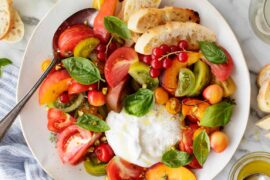Unleash Your Child’s Creativity with This Easy No-Cook Playdough Recipe!
Welcome, creative parents! Are you looking for a super easy no-cook playdough recipe that you can whip up in just minutes? A recipe that is not only safe for your little ones but also provides endless hours of fun? Well, you’ve come to the right place! Making your own playdough at home is a delightful way to engage with your children and spark their imagination.
Why Homemade Playdough?
Homemade playdough has several fantastic benefits:
- Safety: You have full control over the ingredients, ensuring it’s safe for kids, especially those with allergies.
- Economy: Making playdough with common kitchen ingredients is very cost-effective compared to store-bought options.
- Customization: Get creative by adding colors, scents, and even glitter to tailor the playdough to your child’s liking.
- Family Activity: It’s a wonderful bonding activity that supports learning and development.
Ingredients You’ll Need
For this simple no-cook playdough recipe, you only need a few basic ingredients that you probably already have in your pantry:
- 2 cups of all-purpose flour
- 2 tablespoons of vegetable oil
- 1/2 cup of salt
- 2 tablespoons of cream of tartar (for elasticity)
- 1 to 1.5 cups of boiling water (added gradually)
- Food coloring (optional for color)
- Essential oils (optional for scent)
Let’s Get Mixing!
Follow these simple steps, and you’ll have soft, pliable playdough that’s perfect for little hands:
- Mix the dry ingredients (flour, salt, and cream of tartar) in a large mixing bowl.
- Add the vegetable oil and mix until combined.
- If you’re using food coloring, add it to the boiling water first. Then slowly pour the colored water into the dry mixture, stirring continuously.
- Stir until the mixture comes together and begins to form a ball. If it’s too sticky, add a little more flour.
- Once it’s cool enough to handle, take the dough out of the bowl and knead it on a flat surface until smooth.
- If you’d like to add scents, now is the time to knead in a few drops of your favorite essential oils.
Congrats! You’ve just made a batch of playdough that’s ready for play. If you find the playdough a bit dry or stiff, you can work in a tad more water with your hands until it reaches the perfect consistency. And there you have it, your very own batch of homemade, no-cook playdough!
Storing Your Playdough
To make sure your playdough stays soft and ready for use, store it properly. Here are a few tips:
- Place the playdough in an airtight container or wrap it tightly in plastic wrap.
- Keep your playdough in a cool, dry place to prevent mold from developing.
- If you notice the playdough getting dry over time, knead a little bit of water into it to revitalize its texture.
Creating playdough at home is not just about saving money or ensuring the safety of your kids; it’s about the moments you create and share together. When you measure the ingredients, mix colors, and shape those squishy creations, you’re not just making playdough; you’re making memories.
Now, let’s talk about customization and how you can level up your playdough game. From vibrant colors to fascinating textures, the possibilities are endless. So roll up your sleeves because the fun has just begun! And remember, the key to excellent playdough is to enjoy the process as much as the play. Get ready to delight in some squishy, colorful, homemade playdough joy!

5 Things Parents Should Know When Preparing the Easy No-Cook Playdough Recipe
1. Safety First!
As a parent, your primary concern is the safety of your children. Rest assured that this playdough recipe is completely non-toxic and edible, though not tasty! Although it’s safe if ingested, it’s always best to supervise younger children during play to ensure they aren’t consuming large quantities.
2. Texture Troubleshooting
Texture is key to perfect playdough. If your dough is too sticky, gradually add more flour as you knead. If it’s too dry, add tiny splashes of water until it’s just right. Don’t worry about getting it perfect on the first try — making playdough is all about adjusting and learning!
3. Creative Enhancements
Engage your children’s senses by adding a few drops of essential oils for a delightful scent or mixing in some glitter for sparkle. Let your children pick their favorite colors and smells. This not only makes them feel involved but excited to play with their custom creations!
4. Allergy-Friendly Options
For children with allergies, this playdough can be tailored to their needs. You can substitute different types of flour, like gluten-free options, or use hypoallergenic oils instead of vegetable oil. Always check the ingredients if your child has specific sensitivities.
5. Make it Educational
Playdough isn’t just for fun; it’s a fantastic educational tool. Use the measuring and mixing process to teach basic math and science concepts. You can also encourage the development of fine motor skills as children roll, shape, and cut their playdough into various forms.
Creative Playdough Ideas to Try
Once you’ve made your playdough, the fun truly begins. Here are some imaginative ideas to get the creative juices flowing:
- Create playdough food and set up a pretend restaurant.
- Use cookie cutters to make shapes and practice identifying them.
- Roll out the playdough and use rubber stamps to create patterns.
- Build a playdough zoo with animals of all shapes and sizes.
- Encourage storytelling by creating characters and acting out scenes.
Remember, there is no right or wrong way to play with playdough. Encourage your children to use their imaginations and come up with unique ways to mold and shape their playdough. So grab those aprons, clear the table, and get ready for a fantastic playdough adventure with your kids!
And hey, don’t forget to snap some photos of your playdough creations. These are the little moments that you’ll cherish for years to come. Happy playdough making, everyone!
See more great Things to Do with Kids in New Zealand here. For more information see here
Disclaimer
The articles available via our website provide general information only and we strongly urge readers to exercise caution and conduct their own thorough research and fact-checking. The information presented should not be taken as absolute truth, and, to the maximum extent permitted by law, we will not be held liable for any inaccuracies or errors in the content. It is essential for individuals to independently verify and validate the information before making any decisions or taking any actions based on the articles.




